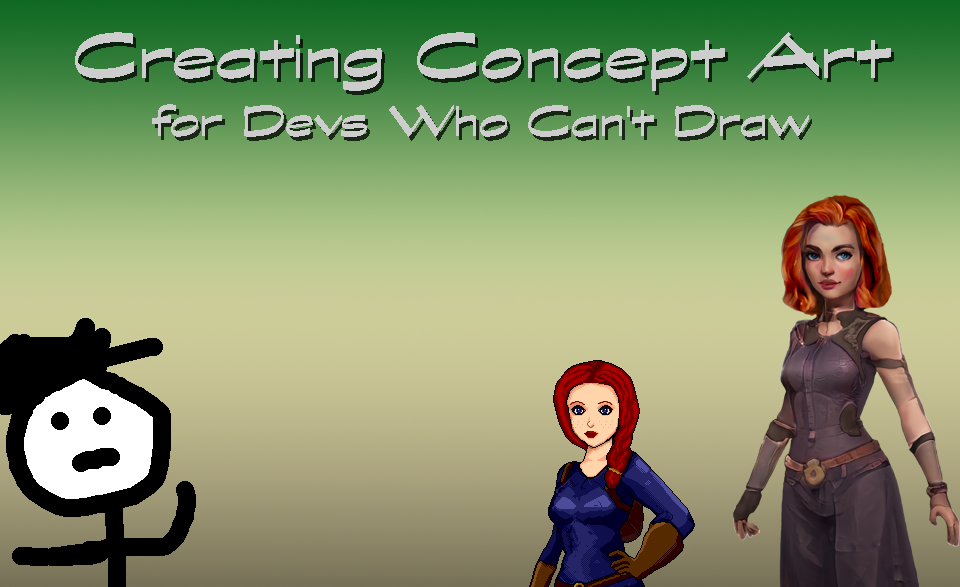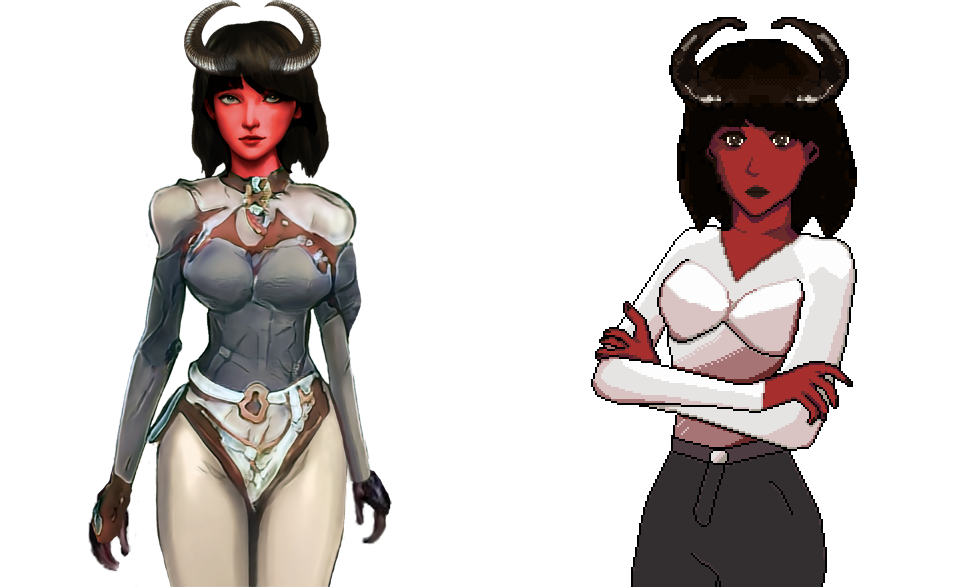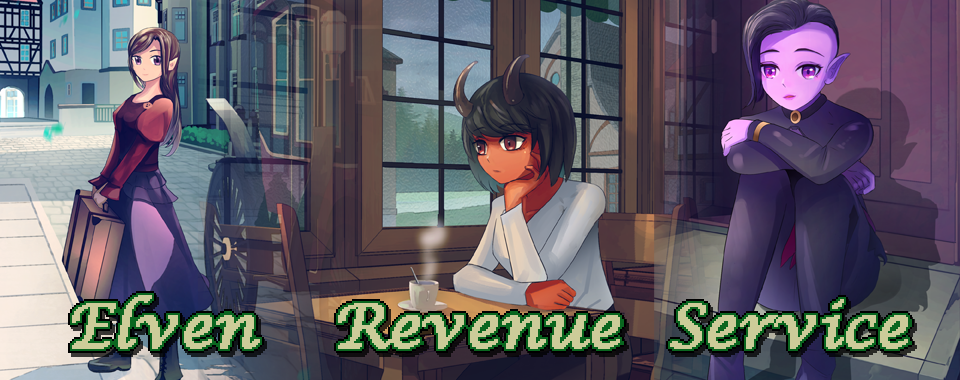Creating Concept Art for Devs Who Can't Draw

When the development of Elven Revenue Service began, I knew one of my big hurdles would be art. I see myself as a writer, first and foremost, but I have a fascination with giving a story a visual component as well. In the past, finding artists for a project was exceptionally difficult; it's hard to sell a stranger on your vision for a story, after all, and that goes double when it involves a lot of work on their part. Mediums like comics, video games, animation, and so on were all basically off limits. I knew that I needed to handle that first, but again, finding artists was a no go. I eventually decided to employ the only visual art medium I had experience with: pixel art. But with pixel art, it's pretty hard to get started without some kind of initial image to base it on, so I still needed to figure out how I could get that. Most of my prior experience was editing existing video game sprites for forums or mods, after all. Fortunately, technology is here to help.
Well, if you've been around any kind of fandom in the last few years, you've probably seen at least one piece of art created by neural networks, if not dozens. These neural networks are pretty impressive, as they function by taking in a lot of sample artwork, identifying key features, and then using that information to generate wholly new images. In other words, it's art drawn by AI, and it happens in just a few moments. While many of these neural networks are private, there are also quite a few that are publicly accessible, allowing users to create, remix, and modify the outputs of these neural networks. If you get into the nitty gritty of it, you can change values for things like art style, angle, masculinity/femininity, hair, skin, and eye color, ethnic identifiers, and facial expressions. And, since a lot of the artwork fed into these involves non-human fantasy characters, even things like pointed ears or tails could be made to appear.

If you're like me, then you probably have some sort of an image in your mind of what you want that character to look like, but the problem is translating that to a form that other people can see. Sonya here, for example, was always supposed to have a punky, asymmetrical hair style and a purple-tinged skin tone. Since you have some control over the end product of these neural net programs, it's totally possible for someone who can't draw to tailor one of these images to be pretty close to what they want. Close enough, at least, that you can show it to a real artist and get it going from there. Their popularity in fandom circles is mostly due to this ease of use, and the ability to change the art style radically can create even photorealistic takes on fictional characters.
So, if you've got limited options at the start like I did, you'll first want to pick one to work with. I ended up using a site known as Artbreeder, which I had some familiarity with for generating D&D NPCs, but others are out there. It has categories for portraits, in realistic and anime styles, as well as full-body character designs, which are all very useful for Visual Novels. The faces on the full body designs tend to be a bit wonky, so it may be best to create a portrait as well, even if you don't strictly need one. Since this isn't a tutorial, I won't go into too much detail about actually using the site, but there are some things you should consider:
- While you can upload artwork to introduce to the neural network, I wouldn't do that for these purposes. Although images created with Artbreeder are owned by the creator, they also have to be licensed as Creative Commons, which may be a problem for elements of pre-existing images. Copyrighted images being uploaded can lead to all sorts of issues, so just don't do it. That means that, yes, there are images descended from "my" concept art, although you often wouldn't know it by looking.
- Generating images randomly until you hit on something you like and tweaking it from there is a valid strategy, but it's not the most efficient. You can browse the gallery of created images and search through it using keywords, so it's faster to find an image that has some of the traits you want as a starting point. It's also possible to mix two images together, even in ways like taking the style of one and the content of another. Doing that gives you a good, distinct base to work from.
- Some art styles are handled better than others. For example, Artbreeder is quite good at generating cute anime girls out of the ether. If you've got a more Western comic-inspired style, or perhaps wanted to use a classical art style like Impressionism, you might have a harder time.

- Don't think this is a replacement for a real artist. A short, simple Game Jam game might be able to get away with using the output directly, but like many AI generated images, it gets the details wrong. This leads to things like asymmetrical arms, excessive fingers, and nonsensical clothing or armor features like buttons or pockets in places where they don't belong. A lot of the full body images struggle with feet and shoes in particular.
- It's easy to get sucked in and fiddle with an image forever trying to fix those details. Don't fall into that trap! If something really needs to be fixed, pop open some image editing software like Photoshop and adjust it manually. Still much faster and easier than creating it from scratch!
- Artbreeder does limit the resolution of downloaded images without a paid membership. Still, it's a good deal for those of us who can't draw.
While these pieces in and of themselves aren't quite up to the quality of a professional product, things may look very different in 10 years. Even now, though, they're perfectly workable as placeholders or concept art, especially if you're coming at VN production with writer or programmer history rather than artistic experience. I hope this encourages others like me out there who are hesitant about their art skills to jump in! And, if you'd like to see a little more of how these characters turned out, give the Elven Revenue Service demo a try.
Get Elven Revenue Service
Elven Revenue Service
A Visual Novel that offers a taste of everyday life in a fantasy world.
| Status | In development |
| Author | StarbeastInferno |
| Genre | Visual Novel, Interactive Fiction |
| Tags | 16-bit, Dating Sim, Fantasy, LGBT, Meaningful Choices, Multiple Endings, Pixel Art, Romance, Story Rich |
| Languages | English |
More posts
- Elven Revenue Service is Still on the Way!Jul 19, 2023
- Writing a Branching StoryNov 04, 2022
- Elven Revenue Service: DEMO v1.2 is Live!Apr 30, 2022

Leave a comment
Log in with itch.io to leave a comment.